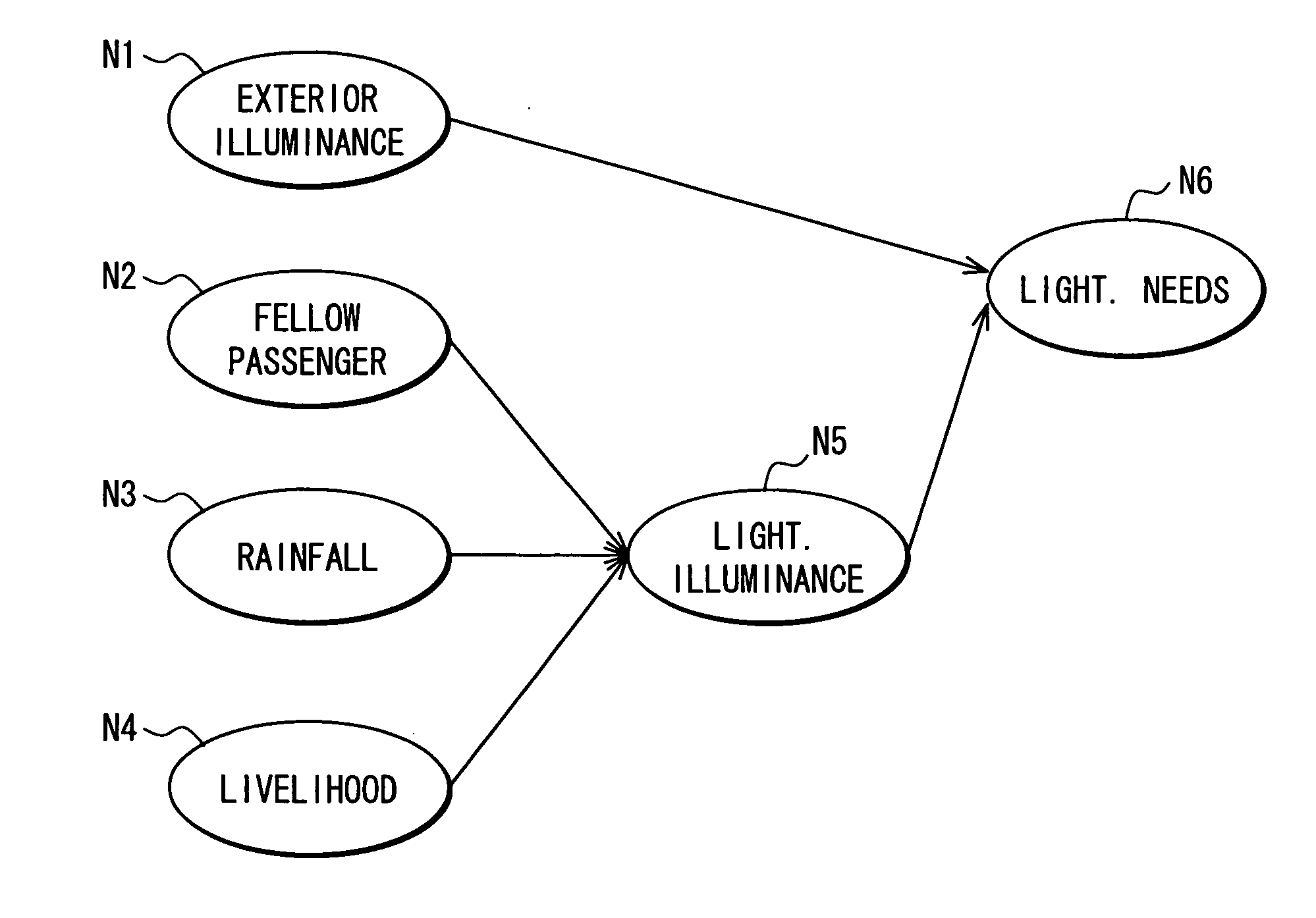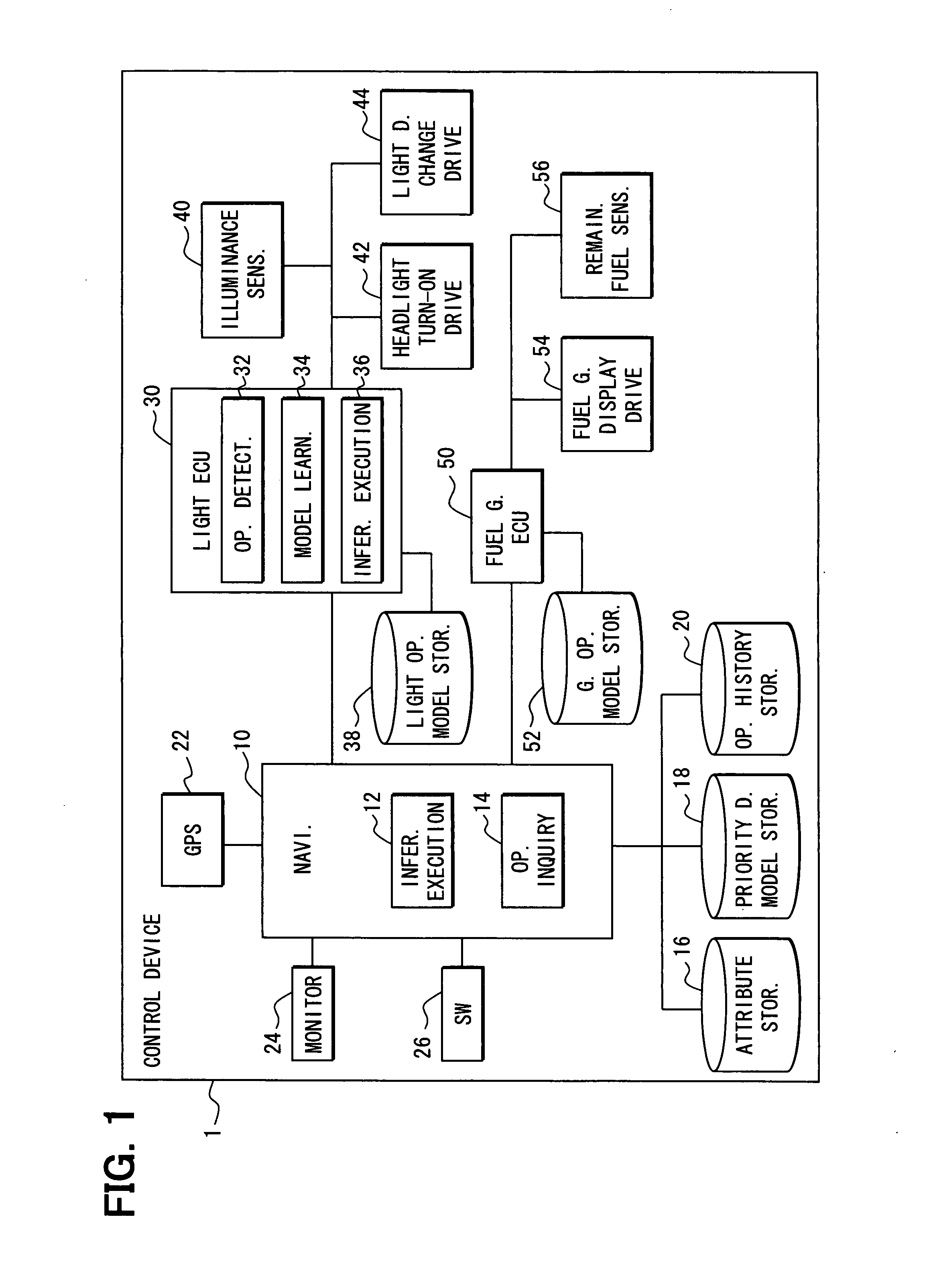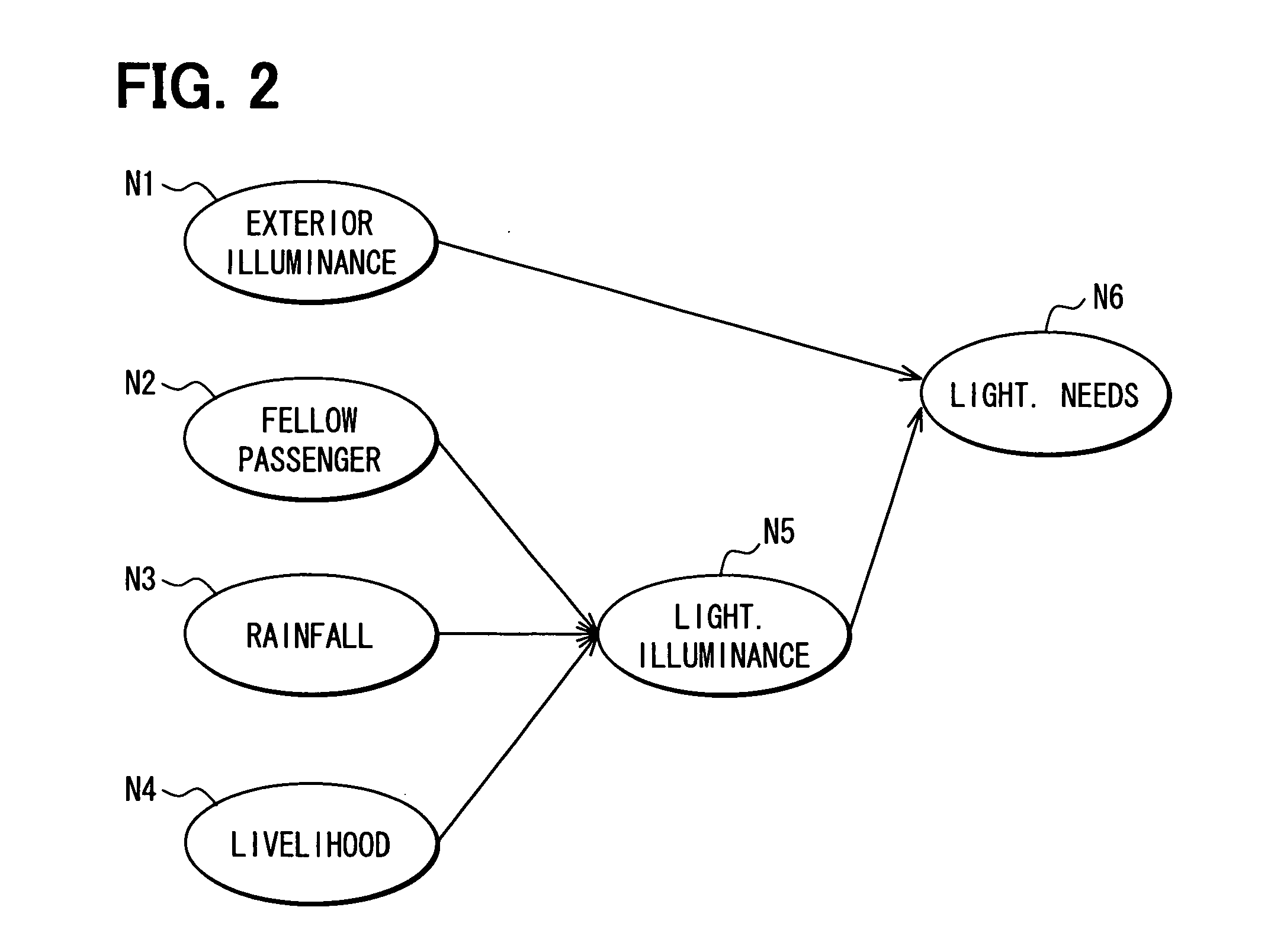Control device for controlling in-vehicle unit
a technology for controlling devices and in-vehicle units, applied in signalling/lighting devices, vehicle components, optical signalling, etc., can solve problems such as unsuitable drivers, devices disclosed, and documents that involve problems, and achieve the effect of dramatically increasing the operation model of in-vehicle units
- Summary
- Abstract
- Description
- Claims
- Application Information
AI Technical Summary
Benefits of technology
Problems solved by technology
Method used
Image
Examples
first embodiment
[0099]FIG. 1 is a drawing illustrating the configuration of a control device 1 that controls in-vehicle units mounted in a vehicle, in this embodiment. In this embodiment, as illustrated in FIG. 1, the vehicle includes an illuminance sensor 40, a headlight turn-on drive unit 42, and a light direction change drive unit 44. The illuminance sensor 40 detects the lightness of exterior and is installed on, for example, top of the vehicle. These in-vehicle units related to lights are all connected to a light ECU (Electronic Control Unit) 30 and controlled by the light ECU 30.
[0100] The light ECU 30 includes an operation detection unit 32, a model learning unit 34, and an inference execution unit 36. The operation detection unit 32 has a function of detecting the operations of the in-vehicle units controlled by the light ECU 30. An example will be taken. When the headlights are turned on by the headlight turn-on drive unit 42, the operation detection unit 32 detects that the headlights ha...
second embodiment
[0147] Description will be given to a control device in a second embodiment of the invention. The control device in the second embodiment and the control device 1 in the first embodiment are identical with each other in basic construction (Refer to FIG. 1). In addition to the construction of the control device 1 in the first embodiment in which the presence or absence of operation needs is determined with respect to each in-vehicle unit, the control device in the second embodiment has a construction for controlling multiple in-vehicle units that are often operated at the same time.
[0148]FIG. 11A and FIG. 11B are drawings illustrating examples of service templates that define the operations of in-vehicle units that are often simultaneously performed in the control device in the second embodiment. The GS operation template illustrated in FIG. 11A defines the operations of in-vehicle units that are often simultaneously performed when the vehicle goes into a gas station (hereafter, abb...
third embodiment
[0158]FIG. 14 illustrates the configuration of a control device 3 in a third embodiment of the invention. The control device 3 in the third embodiment is identical with the control device 1 in the first embodiment in basic construction. The control device 3 in the third embodiment is different from the control device 1 in the first embodiment in that the automobile navigation system 10 includes an in-vehicle unit selection unit 70.
[0159] The in-vehicle unit selection unit 70 has a function of performing the following operation: based on various situations notified from individual ECUs, it determines what needs are present in a driver, the vehicle, or the like; and it selects an in-vehicle unit capable of meeting the needs. The “needs” cited here are a particular that motivates the driver to operate each in-vehicle unit and a cause for the occurrence of “operation needs” for each in-vehicle unit. To determine the presence or absence of needs of the driver, the vehicle, or the like f...
PUM
 Login to View More
Login to View More Abstract
Description
Claims
Application Information
 Login to View More
Login to View More - R&D
- Intellectual Property
- Life Sciences
- Materials
- Tech Scout
- Unparalleled Data Quality
- Higher Quality Content
- 60% Fewer Hallucinations
Browse by: Latest US Patents, China's latest patents, Technical Efficacy Thesaurus, Application Domain, Technology Topic, Popular Technical Reports.
© 2025 PatSnap. All rights reserved.Legal|Privacy policy|Modern Slavery Act Transparency Statement|Sitemap|About US| Contact US: help@patsnap.com



